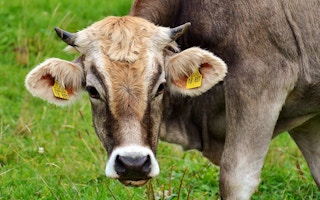Look to the dawn of human civilisation and, on the horizon, you will see a field of grass. The first plant humans domesticated was likely corn or rice, both types of grass. We eat grass. We feed it to livestock. And, sometimes, we turn it into ethanol and use it to run our cars. We’ve built empires on grass.
But grass hasn’t made it easy.
The energy in grass is remarkably hard to get to. There is a trove of sugar in each leaf, stock and seed, but it’s hidden behind thick cell wells — which is why cows need four stomachs to digest it. Getting the energy out of grass is like turning a piggy bank upside down and rattling it until you have enough money to buy a soda. But scientists aim to change that, engineering grass with
softer cell walls to make it easier to unlock the energy within. They’re tired of shaking the piggy bank. They want to break it wide open.
Recently, researchers identified a gene they believe is largely responsible for stiffening the cell walls. It might be possible to modify the gene, or knock it out entirely, creating grass that will break down more easily. This would be good news for cows and sheep, for the makers of biofuels — and for the rest of us.
“Grasses, including rice, maize or corn, wheat, barley, rye, etc. are crucial for food and feed sources for the planet, and very important to humans, including for food, feed and nutrition, and their inedible parts — the stem wastes — for sources of biofuels and chemicals,” said John Ralph, professor of biochemistry at the University of Wisconsin-Madison and at the Department of Energy’s Great Lakes Bioenergy Research Center. Pinpointing the gene and understanding how it works “is a potentially valuable advance,” he said.
Global agriculture is dominated by grass species. The leading food crops — rice, wheat and maize — are grasses. Billions of tons of grass are produced annually to feed humans and the animals — cows, goats, etc.—that humans eat. Making the energy in grass more accessible would be a boon for agriculture and fuel production.
“These sugars represent a potentially vast resource to make biofuel — and therefore decrease carbon dioxide emissions — but the indigestibility makes it expensive to make biofuels from this grass biomass,” said Rowan Mitchell, a plant biologist at Rothamsted Research in England, and co-leader of a team that also included U.S. and Brazilian scientists. “By turning down the activity of the gene that we discovered, we can improve the digestibility of the biomass and hope to make biofuel production more cost-effective so that it competes better with fossil fuels.”
Furthermore, because of the indigestibility of grass, cattle often require large pasture areas to meet their energy needs, so “if we can make it more digestible by turning the gene down, we can decrease the land requirement per cow, hopefully reducing pressure on natural environments,” Mitchell added.
Mitchell first found the grass-specific gene he thought was responsible for toughening cell wall in 2007, while sitting at a computer playing with available databases. “I looked for a gene that was highly active in grasses but not non-grasses, and was of the right type as judged by the sequence of the protein encoded by the gene,” he explained. He narrowed down a list of ten genes and, from those, selected the most likely candidate. “However, it proved difficult to demonstrate that this prediction was correct, and several labs, including ours, tried for many years.”
They finally nailed it after their Brazilian collaborators successfully suppressed the workings of the suspect gene, which increased the release of sugars by as much as 60 percent. A paper describing their research recently appeared in the journal New Phytologist.
The potential impact of their discovery will almost certainly reverberate in Brazil, where a growing bioenergy industry produces ethanol from the waste leftovers of grass crops, such as the leaves and stalks of maize, sugar cane residues, and from sugar cane grown specifically to be turned into biofuel.
“In Brazil alone, the potential markets for this technology were valued last year at more than $400 million for biofuels and [more than $18 million] for forage cattle,” said Hugo Molinari, the other team co-leader and principal investigator at the laboratory of genetics and biotechnology at Embrapa Agroenergy, part of the Brazilian Agricultural Research Corp. “Economically and environmentally, our livestock industry will benefit from more efficient foraging and our biofuels industry will benefit from biomass that needs fewer artificial enzymes to break it down.”
Mitchell said it also might be possible to achieve the same effects by searching for natural variants of the gene, an approach “we are looking into for rice and tropical forage grasses,” he said. If cows could get more calories from one acre of grass, herders would have less incentive to burn down rainforest to create more pasture land. That would be good news for the climate. Deforestation is a leading source of heat-trapping carbon pollution.
The one thing the genetically modified grass will not do is cause cows to fart less methane, a potent greenhouse gas. “Unfortunately, there is no reason to believe suppressing this gene will improve that,” Mitchell said. “However, colleagues here have identified another gene target which should help reduce methane emissions, so our plan is to try to combine both targets in one grass.” But, he stressed, “We need to proceed carefully and ensure we are not introducing new problems.”
Meanwhile — and although many additional steps remain — this finding could have a significant impact. “The ‘digestibility’ of biomass — breaking down these polymers into sugars — is really important for making biofuels efficient, thereby reducing greenhouse gasses and making animal feed more valuable.”
This story was published with permission from Nexus Media.








